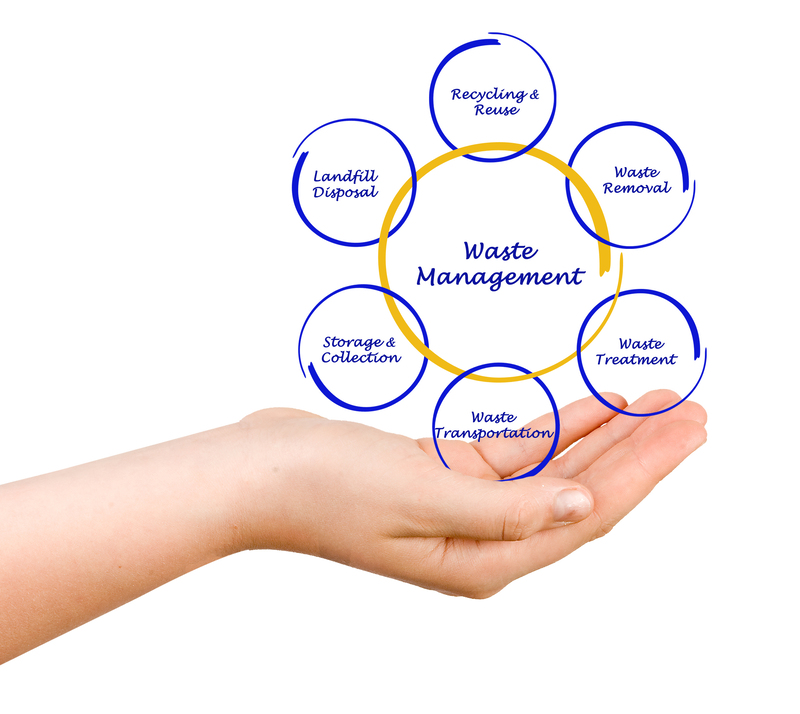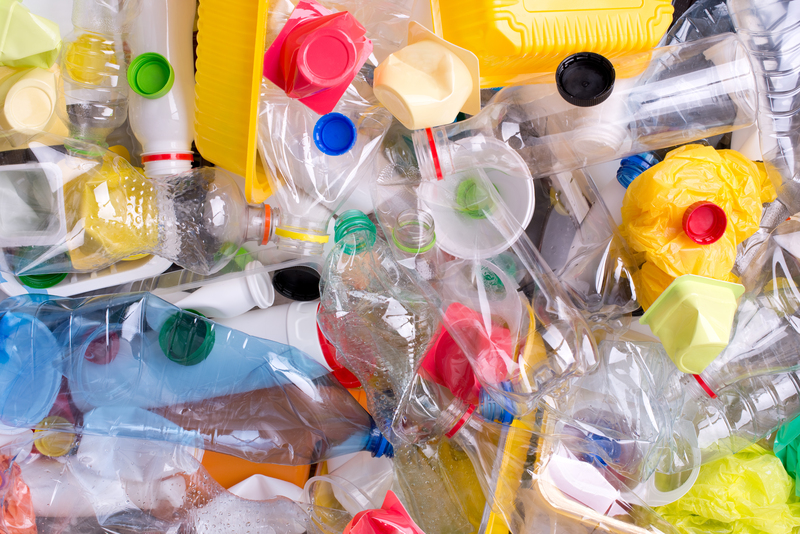Fashion Overhaul: Clever Techniques to Recycle Fabrics
In our fast-paced, trend-driven world, the fashion industry is at a critical juncture. With an estimated 92 million tons of textile waste generated annually, finding innovative ways to recycle fabrics is more urgent than ever. Whether you're a sustainability enthusiast or someone looking to breathe new life into your wardrobe, mastering the art of textile recycling is a vital step in achieving responsible fashion. This guide dives deep into smart, creative, and practical fabric recycling techniques that you can adopt today.

Why Recycling Fabrics Matters in Modern Fashion
Before delving into techniques, it's important to understand why textile recycling is crucial. The fashion industry is one of the world's largest polluters, with significant environmental impacts stemming from waste, resource consumption, and pollution. Choosing to recycle fabrics not only reduces landfill waste but also conserves energy, lowers carbon footprints, and diminishes the demand for virgin materials.
- Reduces landfill waste: Fabric recycling the sheer volume of clothing sent to landfills.
- Conserves raw materials: Recycled fibers mean less need for oil-based synthetics and water-intensive cotton.
- Promotes eco-conscious lifestyle: Adopting recycling in fashion supports broader sustainability goals.
Understanding Textile Recycling Processes
Recycling fabrics, sometimes referred to as textile repurposing or fabric upcycling, generally falls into two main categories:
Pre-consumer Fabric Recycling
- Involves surplus, defective, or leftover material from the manufacturing stage.
- These fabrics are often in pristine condition, making them ideal candidates for creative reuse.
Post-consumer Fabric Recycling
- Focuses on garments or textiles already used and discarded by consumers.
- Post-consumer recycling gives your old t-shirts, jeans, and bedsheets a second life!
Clever Techniques to Recycle and Upcycle Fabrics
Ready to embark on your fashion overhaul journey? Here are some standout techniques to transform cast-off textiles into stylish, practical, and even trendsetting pieces.
1. Patchwork Magic: Creating Unique Textiles from Scraps
Patchwork isn't just for grandmas anymore! It's making a major comeback in contemporary fashion and interior design. This method involves sewing together different fabric pieces to make one larger, often colorful, textile. Not only is it a fabulous way to recycle fabric scraps, but it also lets your creativity shine.
- Quilts and throws - Classic, cozy, and unique for every room.
- Patchwork denim jackets and jeans - Give tired denim a funky, personalized twist.
- Accessories - Create patchwork bags, purses, and hats for statement pieces.
Tip: Combine various fabric textures and colors for a truly original look!
2. Upcycling Old Clothes into New Fashion Statements
Upcycling old garments is a sustainable and fashion-forward way to keep your wardrobe fresh. Instead of tossing out clothes that are out of style or have minor damage, consider creative transformations:
- Cropping and reshaping: Turn long pants into stylish shorts or crop oversized shirts for a modern silhouette.
- Adding embellishments: Use embroidery, sequins, or appliques to refresh plain or worn items.
- Making accessories: Convert sleeves into headbands, scarves, or pouches.
With a little vision, yesterday's fashion faux pas can become tomorrow's must-have.
3. Fabric Weaving and Braiding
Don't underestimate small strips or scraps! Weaving and braiding techniques can transform leftover fabric into robust, beautiful items such as:
- Rugs and mats for your home, using simple weaving looms or braiding methods.
- Handle wraps for bags, upgrading ordinary totes.
- Art panels for wall decor or gift-giving.
This approach not only recycles old fabrics but also adds unique flair to your surroundings.
4. Repurposing into Cleaning Cloths and Rags
Not all recycled fabrics have to be glamorous. Even basic household items can benefit from fabric reuse. Cut worn-out t-shirts or bedsheets into cleaning rags, dusters, or dishcloths. Cotton, in particular, is highly absorbent and durable, making it perfect for multipurpose cleaning around the house.
5. Transforming Fabrics into Craft Supplies
Crafters know that even the smallest fabric bits can be invaluable. Some ingenious ideas include:
- Creating stuffing for plush toys, pillows, and pet beds.
- Making custom buttons, beads, or appliques for garment embellishments.
- Designing bookmarks or gift tags from decorative fabric offcuts.
6. Dyeing and Printing for a Fresh Look
Sometimes, a simple color update can breathe new life into tired fabrics. Natural or commercial dyes, tie-dye, and block-printing techniques allow you to reimagine old textiles with vibrant patterns and hues. This method is especially effective for reclaiming plain, faded, or stained garments.
7. Circular Design: Closing the Textile Loop
Embracing the principle of circular fashion design goes beyond individual DIY projects. Brands and hobbyists alike are now designing pieces with the fabric's entire lifecycle in mind:
- Selecting materials that are easy to disassemble and recycle.
- Employing modular designs so parts can be updated or replaced instead of discarded.
- Encouraging repairs, swaps, or take-back programs.
By thinking circularly, we support sustainable fashion and tackle textile waste at its root.
How to Start Your Own Fabric Recycling Journey
If you're ready to embark on your own fabric recycling adventure, here are some steps to get started:
1. Organize Unwanted Fabrics
- Sort through your closet and linen cupboard for clothing, sheets, or fabric remnants you no longer use.
- Separate items based on fabric type, size, and potential for reuse.
2. Gather Tools and Supplies
- Basic tools include fabric scissors, sewing kits, needles, threads, and perhaps a sewing machine.
- Get creative with fabric glue, dyes, embroidery supplies, and embellishments.
3. Research and Plan Your Projects
- Seek inspiration on platforms like Pinterest or Instagram using tags like #upcycledfashion or #fabricrecycling.
- Choose projects that match your skill level and available materials.
4. Start Small and Build Confidence
- Try simple no-sew projects, such as creating rags or braided keychains, before tackling complex reconstruction.
- Gradually progress to patchwork clothing, weaving, and garment dyeing as you gain confidence.
Top Tips for Successful Fabric Upcycling
- Quality Over Quantity: Always inspect fabrics for stains, tears, or wear. The better the fabric, the better the result.
- Mix & Match: Experiment with blending colors, textures, and prints to discover unique combinations.
- Repurpose Non-Clothing Textiles: Don't overlook curtains, tablecloths, or shower curtains--they often yield a lot of material.
- Share and Swap: Get friends or family involved for material swaps and group projects.
- Support Local Recycling Initiatives: Many communities or charities collect and recycle textiles--don't hesitate to donate what you can't use.
Sustainable Fabric Recycling: Key Considerations
When implementing clever recycling techniques for fabrics, keep these eco-friendly strategies in mind:
Avoid Synthetic Blends When Possible
Synthetics like polyester, spandex, and nylon can be trickier to recycle. Aim for natural fibers such as cotton, wool, or linen, which are more biodegradable and easier to repurpose.
Embrace Zero Waste Mindsets
Strive to use every bit of scrap--tiny clippings can become stuffing, while larger segments are suitable for patchwork or crafting.
Stay Informed About Recycling Programs
Check for local or national textile recycling initiatives, and support brands with take-back or recycling partnerships. Many athletic brands, in particular, offer recycling schemes for old sportswear.
Fashion Brands Leading the Fabric Recycling Charge
The call for sustainable fashion is reshaping the industry at every level. Many designers and brands are adopting recycled fabrics and upcycled materials as integral elements of their collections.
- Patagonia: A pioneer in recycling worn-out outdoor gear into new products.
- Levi's: Offers repair, recycle, and redesign programs for denim lovers.
- Stella McCartney: Known for luxurious clothing using regenerated and recycled fibers.
- H&M: Runs a global garment collection initiative to recycle old clothes into new textiles.
These industry leaders inspire individuals everywhere to take part in the movement to reduce, reuse, and recycle in style.

The Future of Fabric Upcycling
The future of fashion recycling lies in both technological innovation and cultural shifts. Exciting advances--such as fiber-to-fiber recycling, biodegradable synthetics, and closed-loop manufacturing--promise to make sustainable fashion more accessible than ever.
- Automated textile sorting: Improves the efficiency of separating fabrics for recycling.
- Advanced regeneration technologies: Turn old fibers into entirely new fabrics with minimal waste.
- Community-led garment repair workshops: Help extend the mobility and creativity of recycled fashion.
With public awareness of fashion sustainability on the rise, there's never been a better time to join the reshaping of global style culture--one recycled fabric at a time.
Conclusion: Your Role in Fashion's Sustainable Overhaul
Whether you're piecing together patchwork quilts, restyling thrifted finds, or starting a neighborhood fabric swap, every step you take toward recycling textiles makes a difference. Adopting clever techniques to recycle fabrics is not just a trend--it's a lifestyle that champions creativity, conservation, and a greener planet.
Ready to make your own fashion overhaul? Embrace the challenge, gather your forgotten fabrics, and get inspired--because sustainable fashion starts with you. Your creative contribution helps transform the industry and safeguard the environment for generations to come.
- Do you have fabric recycling tips or successful upcycling stories? Share your experiences with friends, family, or the online community to spread awareness and ignite change!